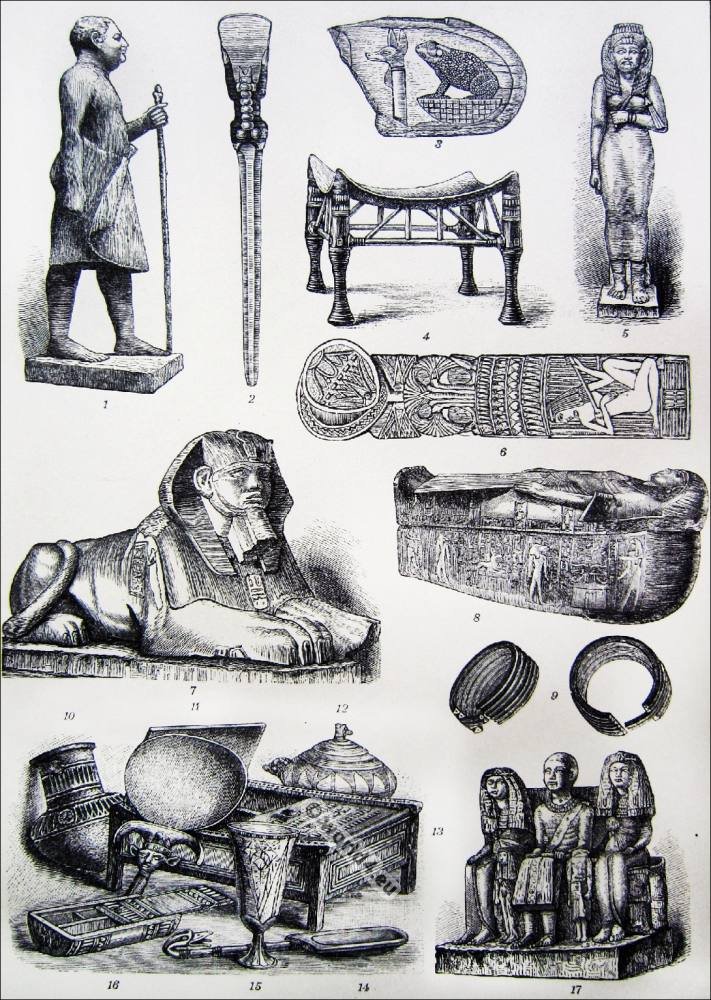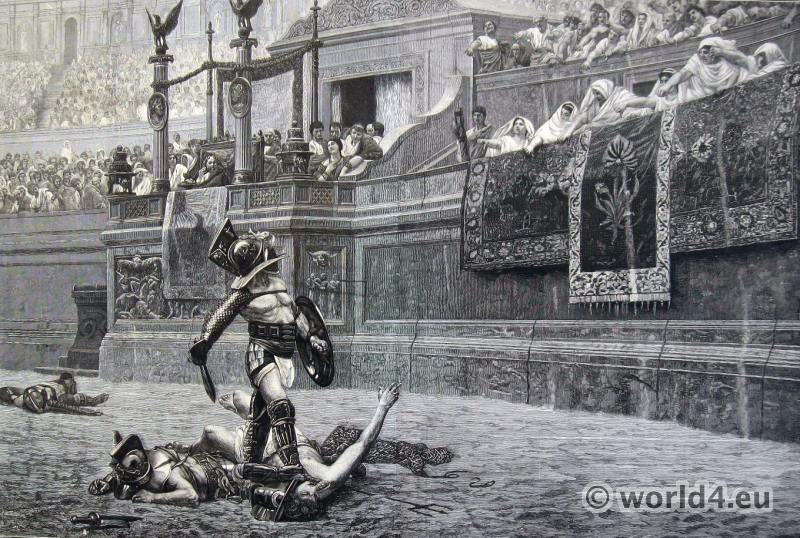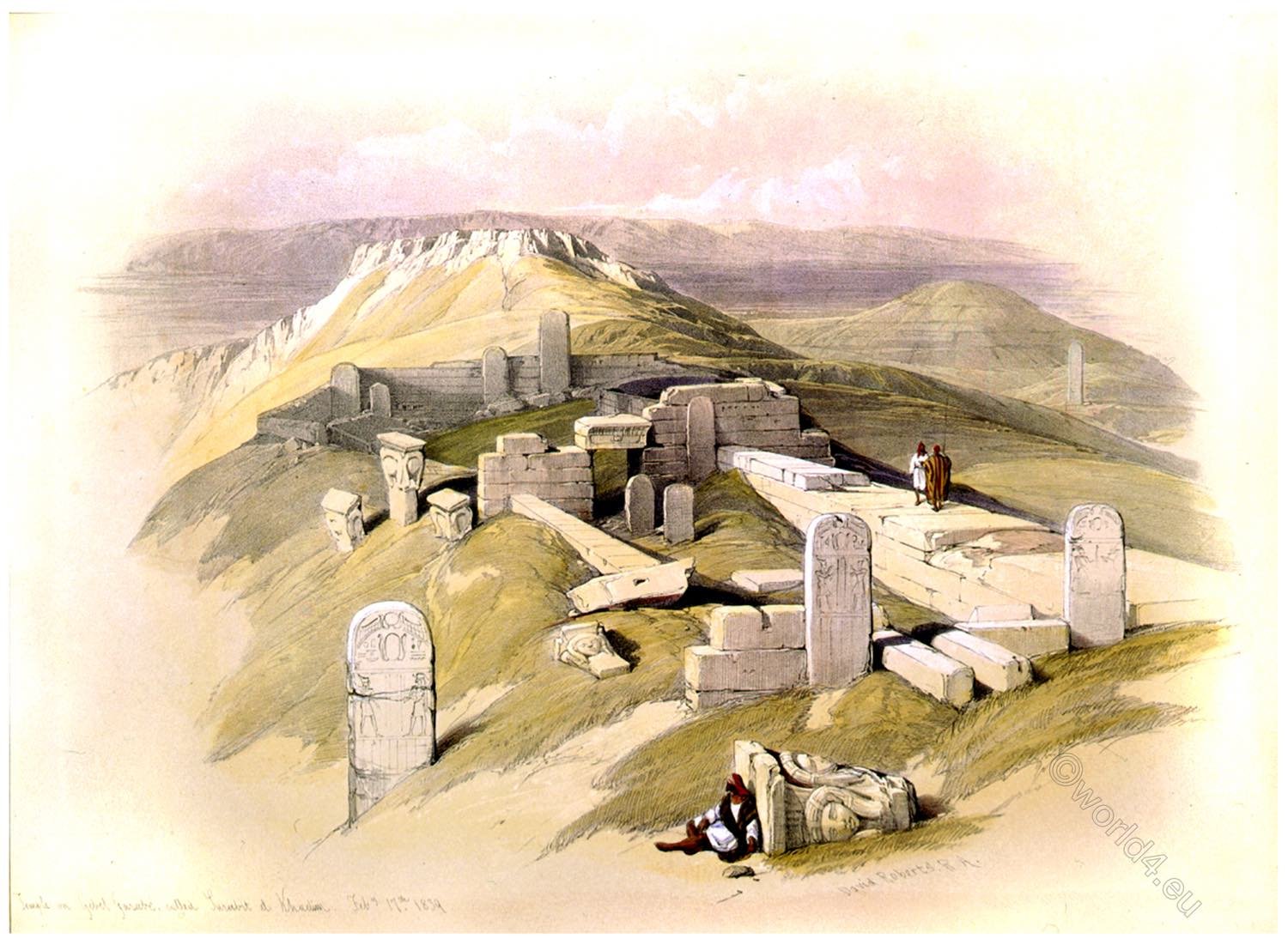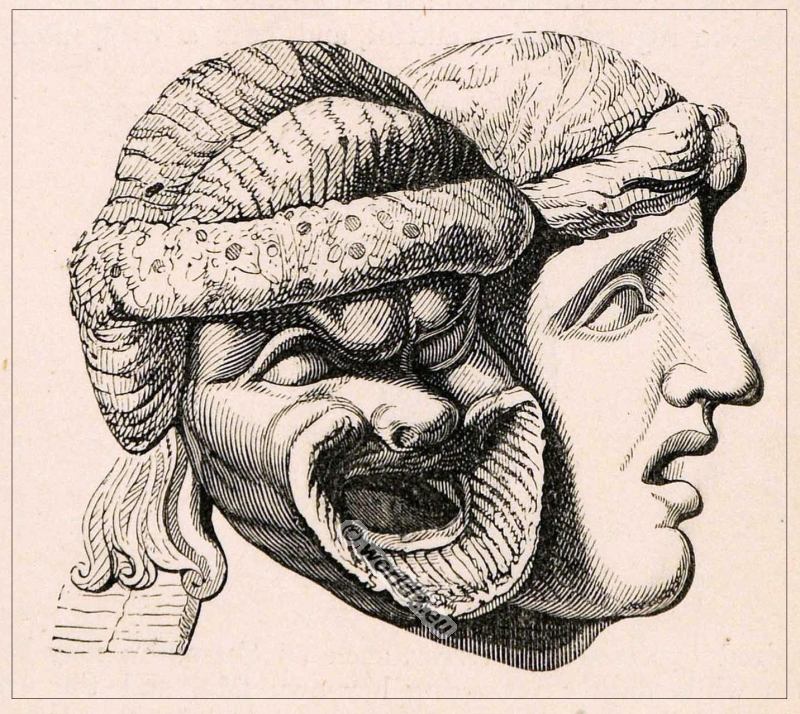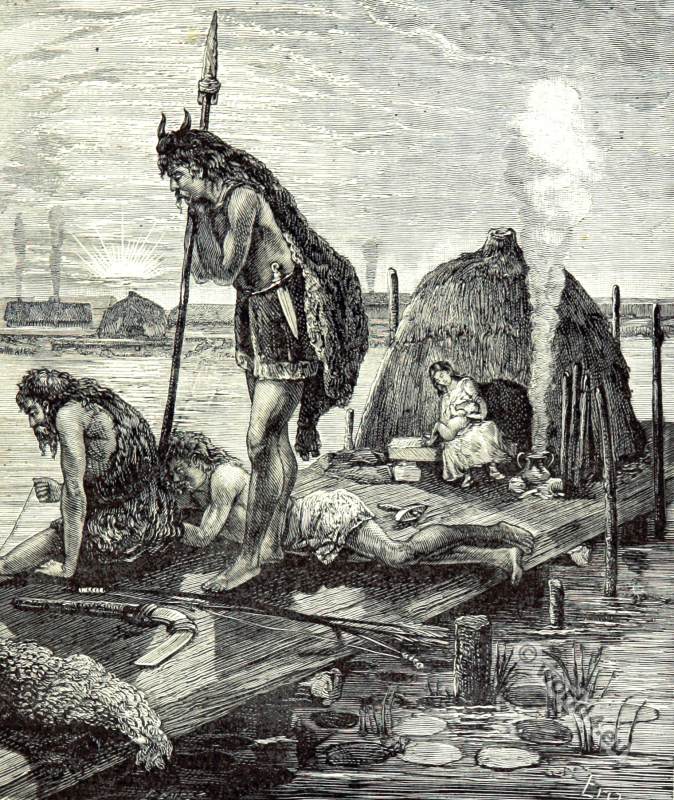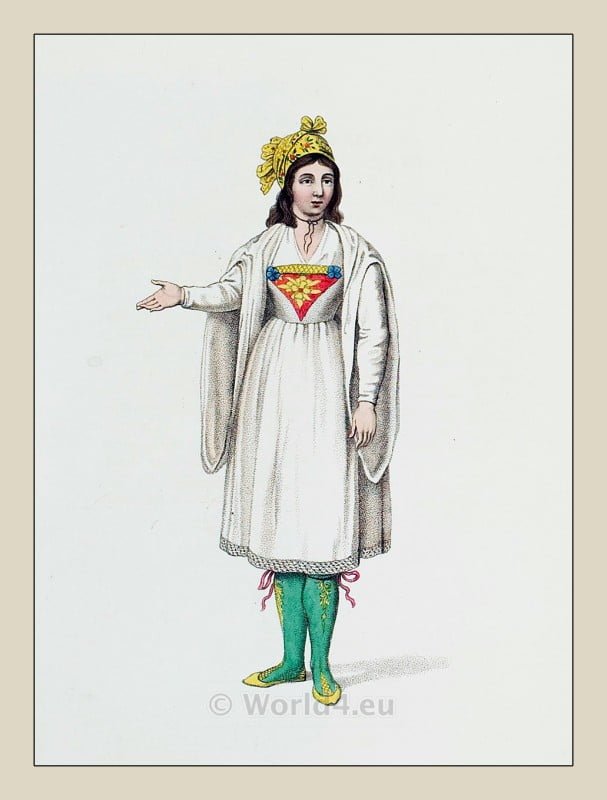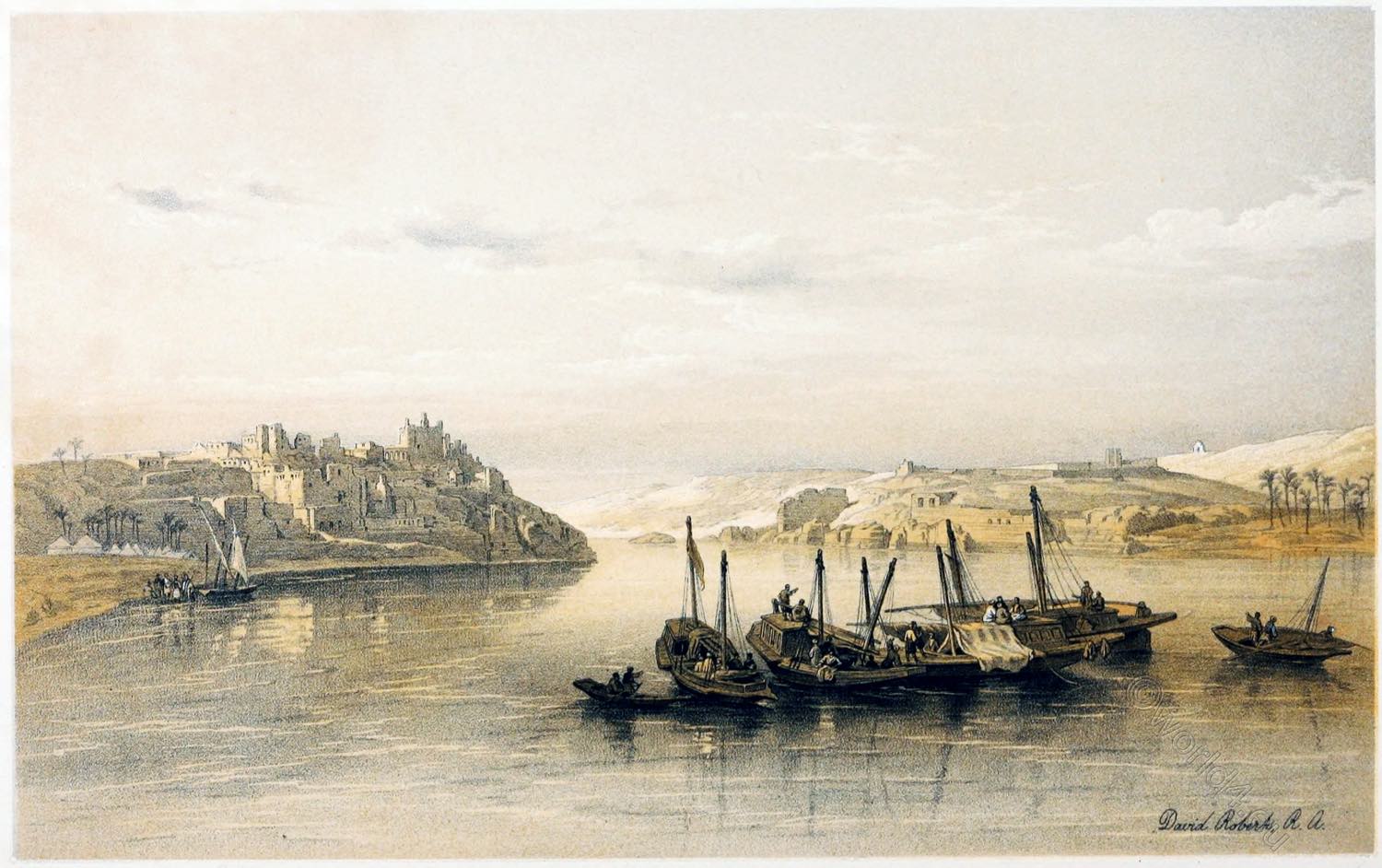
ASWAN AND THE ISLAND OF ELEPHANTINE.
Aswan was the ancient Syene; in the Coptic language it signified an opening, derived from the sudden widening of the Nile below the Cataracts. There are few ruins of the ancient city remaining, and nothing of the Pharaonic or Ptolemaic periods. It was an important station under the Romans, and the names of Nero and Domitian are preserved upon the ruins of a small temple. To this place Juvenal was banished for having satirized a favorite of Hadrian.
The most interesting objects in the neighborhood of Aswan are the syenite and granite quarries, which supplied the vast demand of Egypt, in ancient times, for obelisks, columns, and other massive requisites for their temples.
The principal quarries lie on the south-east, and the rocks about Aswan bear evidence of extensive quarrying, in the marks of the wedges used and the forms of the quarried rocks and numerous inscriptions on tablets at Aswan and Elephantine announce the removal of large masses in the reigns of the Pharaohs by whose orders they were hewn, and many of them are of dates previous, as well as subsequent, to the eighteenth dynasty others bear the names of monarchs of the twenty-sixth, immediately before the Persian invasion.
The mode adopted for quarrying the obelisks is shown by one lying on the spot where it was separated, but not removed; ninety feet of its length is in sight, and above twenty more is said to be concealed by the sand. The process for obtaining such a block was by making a line of holes, with a channel connecting them for water; into these holes dry wooden wedges were driven, which, absorbing the water by the energy of capillary attraction, accumulated force enough to rend the rock in the line of the wedges, and separate the mass chosen for excavation. The block which lies here was discovered to be unsound and unfit for removal; it still remains to excite the wonder of travelers, where many as large, and even larger, had been quarried and removed.
Elephantine, or, as it was sometimes called, the Island of Flowers, lies on the Nile off the miserable town of Aswan, and not far from the Cataracts, which form the limit to Egypt on the borders of Nubia; the passage up the Nile appears between the island and the deserted town of Aswan; the modem town lies lower down the river.
The island, even during the occupation of Egypt by the French, was covered by many magnificent structures, delineated in Denon’s “Egypt;” of these little now remains, and the sand is fast covering the southern end of the island. Its principal ruins are a granite gateway of the time of Alexander, and near to it, on the north, a small temple of the ram-headed deity Kneph, who presided over the inundation of the Nile, and was particularly adored in the neighborhood of the Cataracts.
The Temple was erected by Amunoph III., the eighth Pharaoh of the eighteenth dynasty, in the fifteenth century B.C.; he is represented in the interior as making offerings with his wife to the sacred ark of Kneph. The cartouche of Remeses IV. is sculptured on one of the columns. The city of Elephantine was, according to Strabo, adorned with quays, temples, and other public structures, on the same grand scale as the sacred Island of Philae. The present quay is of Ptolemaic date, and contains blocks taken from more ancient monuments.
A Christian church once stood a little to the north, and near it an interesting temple, but both were destroyed in 1822 by Mahmoud Bey, to build a pitiful palace at Aswan. Here was the celebrated Nilometer, of which the upper chambers suffered the same fate; the lower part, however, with the stairs, still exists.
Elephantine was a garrison position on the frontier of Egypt under all the successive governments of its Pharaohs, its Ptolemies, and the Romans. It is now inhabited by Nubians, the descendants, probably, of the Nobatas, who, according to Procopius, were prevailed upon by Diocletian to settle in Elephantine.
Roberts’s Journal. Wilkinson’s Egypt.
Source: The Holy Land, Syria, Idumea, Arabia, Egypt, & Nubia, by David Roberts, George Croly, William Brockedon. London: Lithographed, printed and published by Day & Son, lithographers to the Queen. Cate Street, Lincoln’s Inn Fields, 1855.
Continuing

